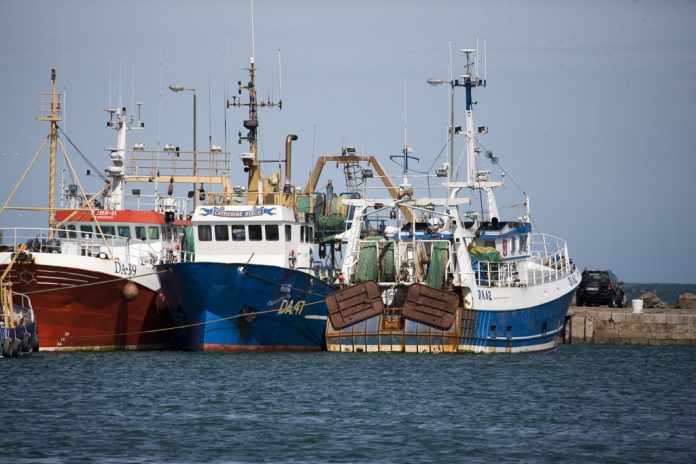Today the Commission presents its proposal ahead of the December Fisheries Council where Member States should agree next year’s fishing quotas.
The European Commission proposes fishing opportunities in the Atlantic and the North Sea for 89 stocks: for 62 stocks the fishing quota is either increased or remains the same, for 22 stocks is reduced and for 5 the Commission proposes new by-catch quotas at low level to reduce the fishing pressure.The fishing opportunities, or Total Allowable Catches (TACs), are quotas set for most commercial fish stocks that keep the stocks healthy, while allowing the fishing industry to profit from fishing the highest amount of fish. As the size of some key fish stocks is increasing – notably for Norway lobster in Skagerrak/Kattegat, Northern hake and Southern horse mackerel – so is the profitability of the fishing sector, with an estimated EUR 1.4 billion profit for 2018.
“Next year will be a milestone year for European fisheries. Our collective duty is to ensure a good transition to the full landing obligation as of 1st January 2019 while continuing our progress to achieve sustainable fishing by 2020. With this proposal, the Commission puts forward concrete solutions to advance on both fronts,” Karmenu Vella, Commissioner for Environment, Maritime Affairs and Fisheries.
In order to put an end to the wasteful practice of discarding fish, as of 1st January 2019, the landing obligation will apply fully to all EU fishing fleets. This means that all catches of regulated commercial species taken on-board (including by-catch) are to be landed and counted against each Member States’ respective quotas. In today’s proposal the Commission has already deducted the amounts corresponding to the agreed exemptions to the landing obligation from the advised catches.
Substantial progress can be observed in the EU with regards to sustainable fishing: 53 stocks are now fishedat Maximum Sustainable Yield (MSY) levels compared to only 5 in 2009 and 44 in 2017. This means that the fishing pressure on the stock is limited to a level that will allow a healthy future for the fish stock’s biomass, while taking into account socioeconomic factors. The Commission is working with Member States to support the fishermen in reaching the objective of having all stocks fished at sustainable levels by 2020, as set by the Common Fisheries Policy.
Today’s proposal will be submitted for discussion and decision by the Member States at the December Fisheries Council on 17-18 December in Brussels, to be applied as of 1 January 2019.
Details of the proposal
The Commission bases its proposal on scientific advice provided by the International Council for the Exploration of the Sea (ICES), with a view to achieving sustainable management of fish stocks while sustaining profitable livelihoods for fishermen.
The proposal covers stocks managed by the EU alone and stocks managed in cooperation with third countries, such as Norway, or through Regional Fisheries Management Organisations (RFMOs). International negotiations for many of the stocks concerned are still ongoing and some further stocks are awaiting scientific advice. For these, the figures will be included at a later stage.
Proposed increases: For 27 stocks such as Norway lobster and plaice in Skagerrak/Kattegat, the Northern hake stock, Western and Southern horse mackerel, cod, sole and plaice in the Irish Sea, and sole and megrim in the Bay of Biscay, the Commission proposes to increase the Total Allowable Catch.
Proposed stocks to be fished at 2018 levels: 35 stocks are kept at the same level as last year.
Proposed decreases: Decreases are proposed for 22 stocks, of which 12 see a decrease of less than 20%.For 5 of the stocks, namely cod in the West of Scotland and cod in the Celtic Sea and Bay of Biscay/Iberian Waters, whiting in the West of Scotland and in the Irish Sea, and plaice in the southern Celtic Sea and southwest of Ireland, scientists have advised setting a zero quota (Total Allowable Catch) in 2019. The Commission is thus proposing to no longer allow targeting these stocks.
Proposed new by-catch levels: For 5 stocks captured incidentally, a by-catch quota is proposed at low level to reduce the fishing pressure, subject to a number of conditions, including full catch documentation (see table 4). These stocks are caught in mixed whitefish fisheries.
For northern seabass: the Commission is proposing a set of measures, expressed in catch limits (not TACs), following the latest scientific advice. Those measures would allow higher catches for hooks and lines fishery with 7 tonnes/vessel (compared to 5 tonnes/vessel in 2018) and a “bag limit” for recreational fisheries of 1 fish/day for 7 months, increasing from only three months in 2018.

